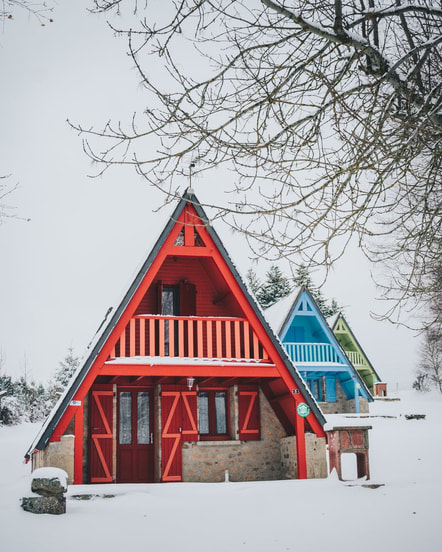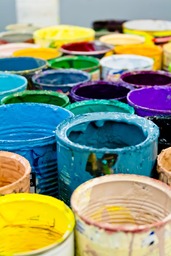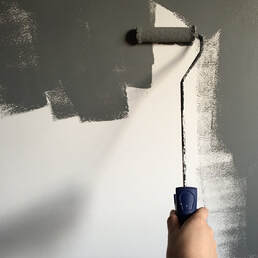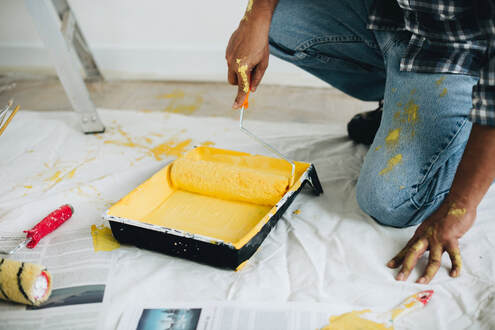|
Common wisdom dictates that house painting should be done when during summer when the daylight is long, the sun is up, and temperatures are ideal for the paint. But when the cold weather starts rolling in, does it mean that it’s too late to pain your house and any painting job should wait until the following year’s summer season already? While painting outdoor surfaces poses several problems and challenges, painting indoors can be done at any time of the year, even during winter.
When painting indoors, the weather does not cause so much trouble because conditions indoors can be regulated so that the paint can dry and cure despite the conditions outside. For optimum results in your indoor painting job, read on to know more about some tips that can help you with a successful painting job during the cold weather Important Pointers to Remember When Painting Indoors During the Cold Weather1. The Type of Paint A special consideration when you are painting indoors, especially during the cold months, is the type of paint you will use for the job. Most paints give off fumes while they dry and cure. These fumes are made of chemicals called volatile organic compounds that can be harmful to you, your family, and your pets. They also smell really bad and will tend to irritate your nose if you inhale them. So, if you don’t take precautions, you will be exposed to some really uncomfortable conditions. If you will not be using the room you are painting soon, you can simply leave the room for a very long time to let fumes completely dissipate out of the room before you use the room again. However, that would be a complete waste of space and in the cold weather you can’t just leave a window open to allow the fumes to dissipate. You can counter this issue by using low- or non-VOC paints. These types of paints are considered to be the safest types of paints because they either have reduced levels of volatile organic compounds or none at all. This makes such paints convenient to use for indoor painting. Their smell is not as strong as regular paints and not as irritating so you can use the room soon after you have finished the painting job without worrying about health issues for you and your family. It’s even safe enough to sleep in a few hours after the paint has set. On the other hand, these paints are a pricier alternative compared to regular paints. They are specially designed so that the harmful fumes from VOCs are reduced which makes it more complex to produce. You also have a limited variety to choose from in terms of paint colors. Even with such disadvantages, the convenience of being able to use your room soon after painting it is a reward that can outweigh the disadvantages. In addition to that, there really should be no price for the security that your home is safe from harmful chemicals that can cause health issues to you and your family. 2. Outdoor Temperatures It’s not impossible to do a painting job indoors during the cold weather, but you still will need to take into consideration the temperatures outside because the cold temperature permeates into the indoor environment. In general, paint needs to be applied when the ambient temperature is between 50-70 degrees. Lower than these temperatures, your paint will freeze, and you will have problems with regards to color quality, water spotting, inconsistent drying time, and film-cracking. What you can do is schedule your painting job when the weather is not too cold. Thankfully, the winters in Georgia are mild enough that you can possibly paint your indoor rooms during winter without a problem. The winter season might even help your paint dry faster because of the low humidity in the air. When the air is dry, it quickly picks up moisture so you won’t need to worry about extended drying periods. But less humid winters is not always the case though, so it still pays to be sure to check actual humidity levels. If humidity is high, takes extra precautions to ensure that the surfaces you are painting on is dry.  3. Your Wall’s Temperature Even when the ambient temperature in the room you are painting on has already been controlled, the walls that will receive the new paint might not have the ideal temperatures. This is true for walls that have their opposite side exposed to the outside of the house. The cold temperature from outside can easily permeate through the walls so that the wall will have a cold temperature compared to the ambient atmosphere in the room. If this is a problem for the room you are painting in, it might be useful to turn up the heater above your desired ambient temperature so that the cold air permeating through the walls can be countered by the heat given off by your heaters. 4. Heating Bill When you’re painting during the cold weather, you might be tempted to crack open a window to let out the fumes coming from the drying paint. This method will increase your heating bill because the cold temperature from the outside will move into the room. This means that your heater will have to work extra hard to keep your room warm, thus, you have a raised heating bill compared to your regular bill when you’re not doing any painting job. Another reason for the increased heating bill is that if the temperatures outside are too cold, your heater will need more energy to maintain the optimum temperature for your paint so that it will dry thoroughly. To avoid needing to open windows to vent out fumes, you can use low- or zero-VOC paints that don’t expel harmful fumes so that no fumes will need to dissipate out of your room. And to avoid the problem of your heating working too hard to maintain optimum temperatures, you can schedule the painting job during times when the temperature outside is not too cold. 5. Ventilation It’s not always possible to have adequate ventilation in your newly painted room during the cold season. Since opening windows or doors while your paint is drying will pose problems for you, including higher heating bills and the possibility that unwanted elements from the outside will enter your newly painted room, you might want to consider setting up temporary ventilation in your room. These will help the paint dry faster and save you from the irritants coming from the paint. With all these things in mind, here are some reasons why you might opt to paint your interior rooms during winter:1. Your room needs it. If you see your room sorely lacking the color that you want it to be, the cold weather shouldn’t stop you from painting your room. After all, there are solutions that will allow you to paint indoors when the weather outside doesn’t permit it. 2. There’s not much competition for paint contractors during winter. Winter is not painting season. So, if you’re planning to have your room painted by contractors, which is always a good idea if you are particular about the quality of the painting job, the winter season will be helpful for you as it will be easier to find contractors who are available to do the painting job. You might even get a discount because it’s not peak season for painting jobs.  3. You might not have time for painting rooms during summer and spring. When the weather is nice, there are plenty of activities that you can do other than painting a room. You can use your time for all the outdoor activities that you want to do during summer and spring instead. In addition, you might want to hold parties in your home during these seasons, so it will be best to have your rooms ready for those parties before these seasons actually rolls in. Come winter time, when you suddenly feel the urge to freshen up your rooms with new paint, the cold weather outside will not be a hindrance for you anymore. With all the tips written above, you can surely paint your rooms without worrying too much about the effects of the cold weather outside. Just make sure that you use a paint that’s safe to use even without ventilation or one of those paints that can tolerate a colder temperature compared to regular paints and you are set to paint.  If you need a reputable house painting professionals in Warner Robins, Macon region who understand the needs of their clients look no further. Contact the experts at Pizzazz Painters Warner Robins. Check us at https://www.pizzazzpainterswarnerrobins.com/ and schedule your appointment for a free painting estimate or call us at 478-292-2821. We are here to help! Painters proudly serving in Warner Robins, Macon, Bonaire, Byron, Kathleen, Lizella, Perry, Fort Valley Bibb County Georgia, Houston County Georgia, Peach County Georgia, Macon County Georgia, Crawford County Georgia.
16 Comments
It’s always a good idea to paint a house. A freshly painted house won’t fail to spruce up your mood and make your house seem like the loveliest place on earth. But, would it be alright to paint your house at any time during the year? Like, what if you wake up feeling blue one morning in the winter and suddenly decide that your house needs fresh paint or some old friend from afar suddenly decides to visit you but it’s already winter and you haven’t freshened up the house’s paint during the summer period.
This is an essential bit of information to note especially if you live in a desert because the difference in day time and night time temperatures in such areas can be on the extremes that you can be experiencing a very hot day but the night could be as cold as 25 degrees. The same is true for areas with high elevation because these places generally get lower temperatures than their low elevation counterparts. For example, Georgia generally has mild winters; so, much of the southern portions of the state is only deprived of the choice to paint their homes during December and January. However, for the mountainous regions, the winter can be brutal with heavy snows and very low temperatures. Painting at Low TemperaturesIf you really must paint your house during the colder weather, take heart because it’s not really impossible. You just need to get low-temperature compatible paints. These paints are specially engineered so that they can set and cure even when temperatures reach 2 degrees outside. They’re special paints, however, so you won’t have the same array of choices as to when you’re painting during spring or summer and you can’t opt for that lovely smooth finish that you get from oil-based exterior paints. In addition to that, not all low temperature compatible paints are created equal. Some paints such as low-temperature acrylic paints can be applied only when the temperature will be between 35 to 50 degrees for at least two to three hours straight. Other Considerations When Painting at Low Temperatures It’s also important to make sure that there will be no sudden dips in temperatures while your paint is curing. This is tricky because various paints have various requirements for curing time. To add to this, Mother Nature is also tricky and unpredictable so the weather forecasts are never truly accurate. Other things that you need to keep in mind when you’re painting during the colder season, include the materials you will need for the painting job, the ideal time of the day to work and moisture. When you’re painting your house, you might be tempted to get on with your painting job right after you get your low-temperature compatible paint. However, you still have to think about materials such as the caulking and primers that you will use while you’re painting your house. These materials may require warmer temperatures so you also need to make sure what kinds you use are also compatible with cold temperatures. As regards the time of day, it’s best to start working as soon as the sun comes up and plan your painting job to coincide with how the sun moves around your house. This way you can paint the side of your house which the sun teaches to provide it with a warmer temperature. Take note also that daylight hours are relatively shorter during the winter season so you have a shorter window of time to finish your painting job unless you’re fine with using artificial lights when sunsets which is not practical anyway because then there will be a colder temperature and you can’t see details in the evening as well as you see them during day time. Lastly, be careful of moistures that stick to your surfaces because they can get trapped under the paint and ruin your painting job. This means that while you’re painting, you will have to make sure that the surface you are painting is dry and free from moisture. So, if you really must paint during the cold season, check with your paint providers for low-temperature paints and while you’re at it, make sure to ask about the ideal temperature range for your chosen paint and how long they will need to cure. Also, check your weather forecast to make sure that you will have a decent temperature for the proper application of your paint. Unlike exterior painting, indoor painting is more accommodating because you can manipulate the environment inside your house better that the exterior of the house. For instance, if you were dead set on painting your exterior walls during the winter, you’ll have to work with the eager amount of sun you will be having or you might have to build a bubble for the parts of your house that you will be painting to protect them from the tough weather conditions. In the interior parts of your house, you’re in control of the conditions. For the most part that is. First, you won’t need to worry about sudden drops in temperature because in winter, you will have a heater running already. Your heater will take care of your paint’s temperature requirement. You will still need to check with your paint providers about the best temperature range for applying the paint you selected and make sure to set your heater is set for such temperatures. It might even be advantageous for you to paint the interior of your house during the winter because the low humidity during this time will be ideal to allow your paint to dry at a shorter time compared to when the humidity is high. But there are also disadvantages to painting the interior of your homes during winter. The main disadvantage would be that the kind of paint you use must be one of those low VOC paints to make sure that it is safe. Since you can’t leave your windows and doors open for long periods during winter, the paint fumes will tend to stay indoors. For many types of paints, there are huge amounts of fumes that will be emitted as the paint dries. These paint fumes are made of chemicals that are harmful if inhaled for long periods of time and many of them will leave your house smelling bad. Low VOC paints are now more common so it’s easy to procure them if you need to paint the interior of your house during winter. Another disadvantage is the amount of electricity you will need to heat your home so that the temperatures will be ideal for the curing of the paint that you apply on your walls. For regular paints, you’ll want to keep your room above 60 degrees. The higher you set your temperatures at, the higher your electricity bill will be. This problem is even made worse when you decide to crack a window open to let out some fumes from the paint. Having open windows will make your heater work harder to keep temperatures at your desired level so you the heaters will need to use more electricity which translates to a higher bill. To wrap things up, your paint needs be applied at a certain temperature range so that it will be applied well and it will yield to the desired result. The best time of the year to have your house painted is generally during spring and summer. If you’ve already missed that window, it might be best to wait for the following year to have the painting job done. However, if it is necessary for the painting job to be done during winter, you still have options and if you carefully pay attention to the conditions, you can still get a decent result in your painting job. Simply choose a low-temperature compatible paint and monitor the weather carefully. Aside from the paint, also make sure that the other materials you will be working with for the painting job are those that can withstand the harsh temperatures of winter.  If you need a reputable house painting professionals in Warner Robins, Macon region who understand the needs of their clients look no further. Contact the experts at Pizzazz Painters Warner Robins. Check us at https://www.pizzazzpainterswarnerrobins.com/ and schedule your appointment for a free painting estimate or call us at 478-292-2821. We are here to help! Painters proudly serving in Warner Robins, Macon, Bonaire, Byron, Kathleen, Lizella, Perry, Fort Valley Bibb County Georgia, Houston County Georgia, Peach County Georgia, Macon County Georgia, Crawford County Georgia. |
CategoriesAuthorPizzazz Painters Warner Robins. I'ts a family owned small business committed to providing quality services guaranteeing the satisfaction of our customers. Archives |
Residential - Commercial Painters and Remodeling in Warner Robins, Georgia
Committed to your complete satisfaction.
Pizzazz Painters Warner Robins
Proudly serving:
Warner Robins, Macon, Bonaire, Byron, Kathleen, Lizella, Perry, Fort Valley , Hawkinsville, Centerville GA, and adjacent areas.
Counties: Bibb , Houston, Peach, Macon, Crawford
Painters in Warner Robins GA
Painters in Macon GA
Painters in Centerville GA
Painters in Hawkinsville GA
Warner Robins, Macon, Bonaire, Byron, Kathleen, Lizella, Perry, Fort Valley , Hawkinsville, Centerville GA, and adjacent areas.
Counties: Bibb , Houston, Peach, Macon, Crawford
Painters in Warner Robins GA
Painters in Macon GA
Painters in Centerville GA
Painters in Hawkinsville GA
|
Contact
Painters in Warner Robins Georgia
Painting Company in Warner Robins and adjacent areas. 478-292-2821
|
Hours of operation
Monday 9:00 AM to 7:00 PM Tuesday 9:00 AM to 7:00 PM Wednesday 9:00 AM to 7:00 PM Thursday 9:00 AM to 7:00 PM Friday 9:00 AM to 7:00 PM Saturday 9:00 AM to 7:00 PM Sunday 2:00 PM to 5:00 PM |
Copyright © 2023 All rights reserved.
Privacy Policy and Term Services
Privacy Policy and Term Services








 RSS Feed
RSS Feed

